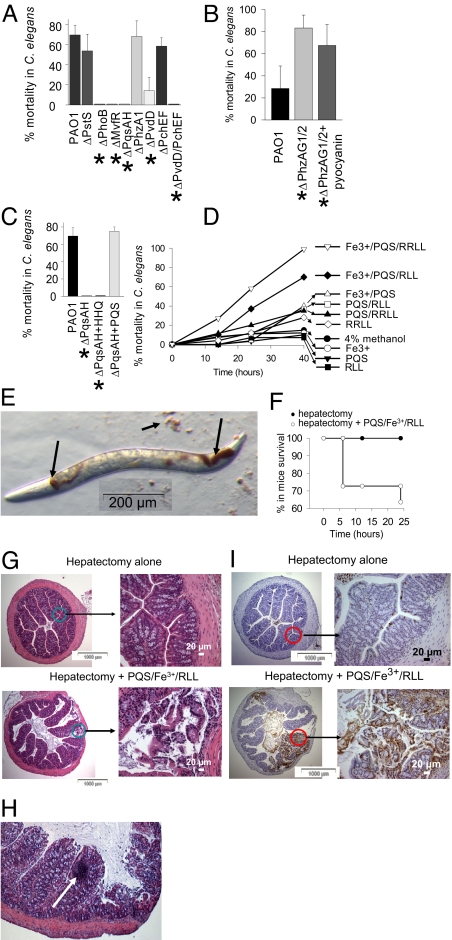Fig. 3.
Effect of PQS/Fe3+/rhamnolipids complex on mortality in C. elegans and mice. (A) Mortality at 48 h in prefasted C. elegans feeding on NGM↓Pi lawns of P. aeruginosa mutants, n = 8/plate, 5 plates/variant. Mutants labeled with * do not induce redness development in C. elegans. (B) Mortality at 24 h prefasted C. elegans feeding on NGM↓Pi lawns of ΔPhzAG1ΔPhzAG2 (ΔPhzAG1/2) mutant. Pyocyanin supplementation does not affect mortality and does not restore redness development, n = 8/plate, 5 plates/variant. (C) PQS supplementation restores mortality in prefasted C. elegans feeding on NGM↓Pi lawns of ΔPqsAΔPqsH (ΔPqsAH). (D) Mortality in prefasted C. elegans feeding on artificial lawns. n = 8/plate, 5 plates/variant. Independent experiments were performed in triplicate and demonstrated similar results. (E) Image of nematode feeding on abiotic lawn containing PQS/Fe3+/RLL. (F) Mortality in mice subjected to 30% hepatectomy coupled with direct injection of 200 μl of PQS/Fe3+/RLL into cecum. n = 5 per group in 2 independent experiments. (G) Histology (H&E staining) of intestinal sections in mice killed at 6 h. (H) Site of inflammatory cell accumulation (shown by arrow). (I) TUNEL assay of intestinal sections in mice killed at 6 h.

